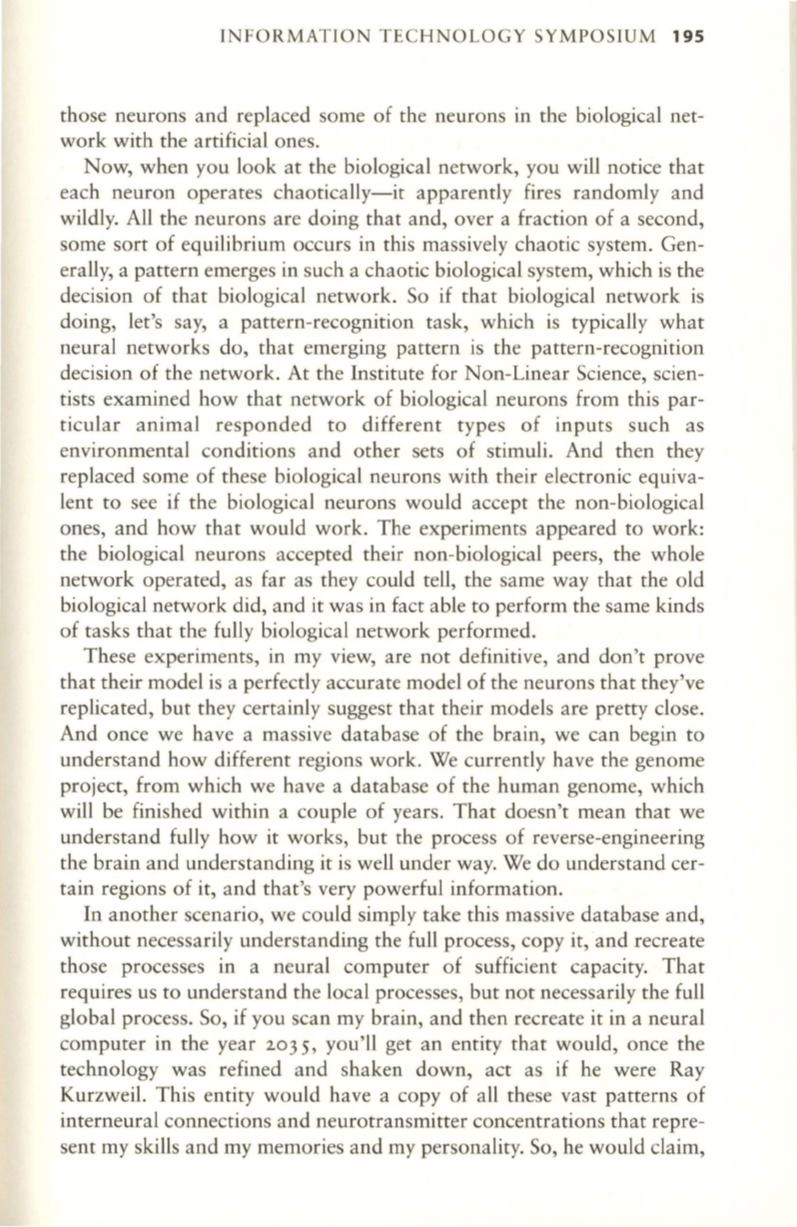
INFORMATION TECHNOLOGY SYMPOSIUM
195
those neurons and replaced some of the neurons in the biological net–
work with the artificial ones.
Now, when you look at the biological network, you will notice that
each neuron operates chaotically-it apparently fires randomly and
wildly. All the neurons are doing that and, over a fraction of a second,
some sort of equilibrium occurs in this massively chaotic system. Gen–
erally, a pattern emerges in such a chaotic biological system, which is the
decision of that biological network. So if that biological network is
doing, let's say, a pattern-recognition task, which is typically what
neural networks do, that emerging pattern is the pattern-recognition
decision of the network. At the Institute for Non-Linear Science, scien–
tists examined how that network of biological neurons from this par–
ticular animal responded to different types of inputs such as
environmental conditions and other sets of stimuli. And then they
replaced some of these biological neurons with their electronic equiva–
lent to see if the biological neurons would accept the non-biological
ones, and how that would work. The experiments appeared to work:
the biological neurons accepted their non-biological peers, the whole
network operated, as far as they could tell, the same way that the old
biological network did, and it was in fact able to perform the same kinds
of tasks that the fully biological network performed.
These experiments, in my view, are not definitive, and don't prove
that their model is a perfectly accurate model of the neurons that they've
replicated, but they certainly suggest that their models are pretty close.
And once we have a massive database of the brain, we can begin to
understand how different regions work. We currently have the genome
project, from which we have a database of the human genome, which
will be finished within a couple of years. That doesn't mean that we
understand fully how it works, but the process of reverse-engineering
the brain and understanding it is well under way. We do understand cer–
tain regions of it, and that's very powerful information.
In another scenario, we could simply take this massive database and,
without necessarily understanding the full process, copy it, and recreate
those processes in a neural computer of sufficient capacity. That
requires us to understand the local processes, but not necessarily the full
global process. So, if you scan my brain, and then recreate it in a neural
computer in the year
2035,
you'll get an entity that would, once the
technology was refined and shaken down, act as if he were Ray
Kurzweil. This entity would have a copy of all these vast patterns of
interneural connections and neurotransmitter concentrations that repre–
sent my skills and my memories and my personality. So, he would claim,


